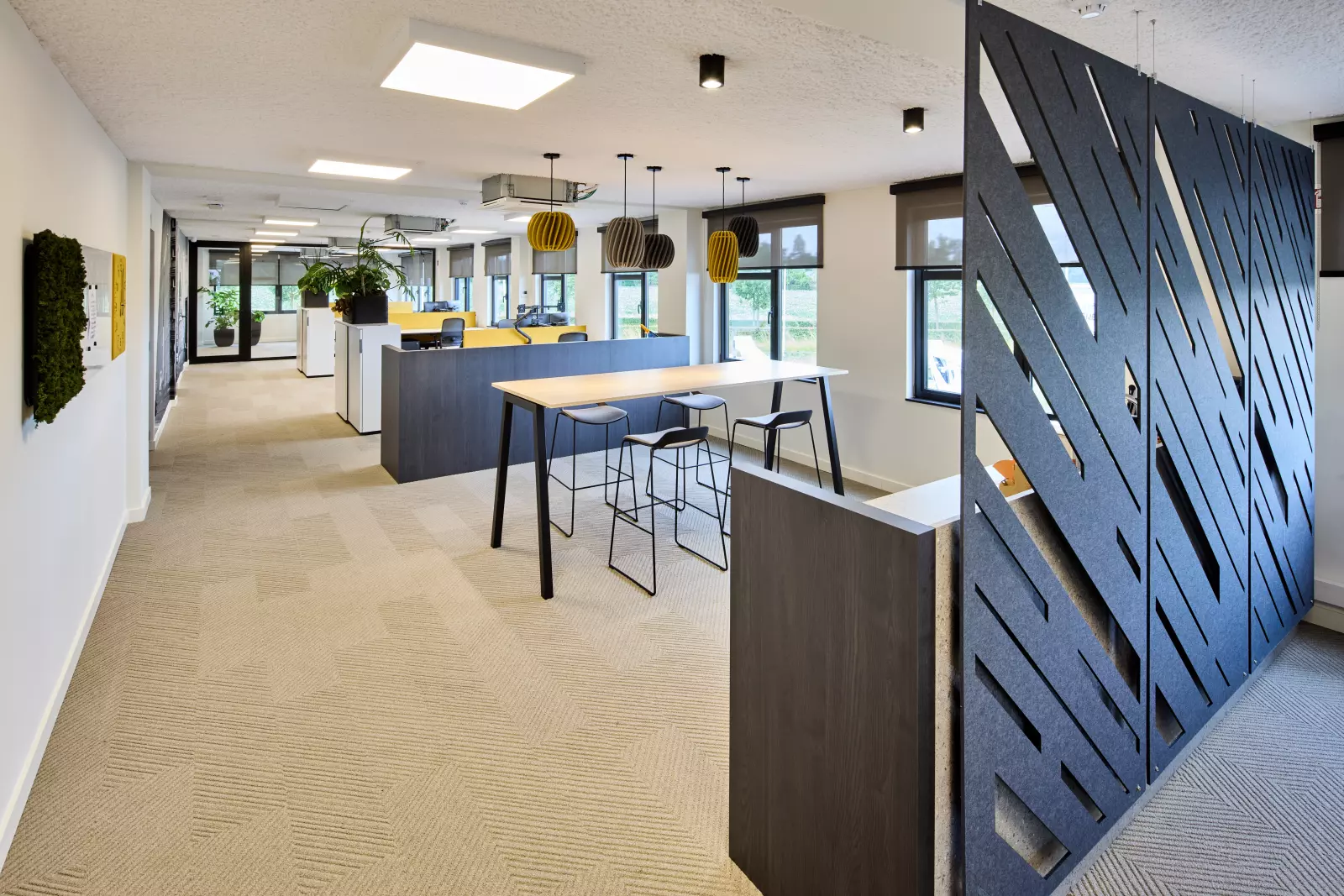
Doing more with less square metres: here’s how to design your office for the future
01/07/2025
Start with insight into workplace usage
A successful redesign starts with insight. Before making any decisions on reducing or restructuring your office space, it is crucial to understand how current workplaces are being used. Which zones are structurally underutilised? Where does a shortage of capacity arise? By using occupancy measurements, sensor technology, and targeted surveys of employees, you collect objective data that forms the basis for thoughtful choices. At Pami, we turn these insights into concrete recommendations so that you not only save space, but also improve your employees’ work experience.
Think in terms of functions, not square metres
In a future-oriented office, it’s no longer about the number of desks, but about the functions a space has to support. The question is not how many people can sit there, but what activities take place. Does your team need quiet areas for concentrated work, spaces for consultation, or zones for informal interaction? By dividing your office based on activities, you create an environment that is in tune with today’s work reality.
Hybrid working requires flexibility
The rise of hybrid working means that not every employee is in the office every day. This provides opportunities to use workplaces more efficiently. Instead of fixed desks for everyone, opt for shared workspaces, supported by smart booking systems and personal storage solutions, such as smart lockers. This keeps your office clear and organised, even during peak times. Pami seamlessly integrates these systems into your office environment so employees can move around easily and always know where to go. Flexibility thus becomes a natural part of your work culture.
Opt for modular and multifunctional furniture
A future-ready office must be able to respond to changing needs. This requires furniture that is not fixed in one function, but adapts to different forms of work, such as movable tables, mobile whiteboards, acoustic cubes, and modular set-ups. For example, a room can serve as a meeting place today and a brainstorming zone tomorrow.
Comfort and appearance remain crucial
A smaller office does not have to mean sacrificing comfort. On the contrary, it’s just as important that each space in a compact working environment feels inviting and pleasant. Ergonomic seating, good lighting, and acoustic solutions contribute to your employees’ well-being and increase productivity.
Less space, more possibilities
You can turn a more compact workplace into an asset with smart choices in layout, design, and technology. At Pami, we think along with you, from analysis to realisation. We combine data, design, and sustainable solutions to create a workplace that is ready for tomorrow.
Wondering how your office can be future-proofed and space-efficient?





